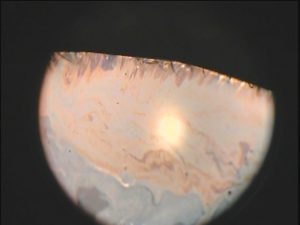Tear film homeostasis works two ways! DR1-α reveals a balance between water and lipids
- informaiton , research
- August 5, 2016
How is everyone dealing with these hot days of autumn? Well, we might have some good news. The LIME Working Group conducted its first (!!) international joint study (at 2 centers), and a manuscript describing this study has been accepted by Investigative Ophthalmology & Visual Science. The paper has already been published and is available to readers around the world!
This paper describes 3 novel findings:
- Together, the color of the interference pattern produced by DR-1α and the non-invasive breakup time (NIBUT) revealed a balance between the lipid layer and the aqueous layer in tear film! → This finding is linked to the diagnosis, monitoring, and treatment of dry eye
- The color of the interference pattern produced by DR-1α and the classification of NIBUT were examined by 3 Japanese ophthalmologists and 2 Korean ophthalmologists and their findings were verified by 2 individuals who were not ophthalmologists. Results showed that the classification system is easy to use and reliable! → This means that anyone can readily use the classification system we developed
- Evidence of two-way homeostasis of tear film → A previous study we conducted (described in Ophthalmology) only found evidence of a one-way compensatory response in tear film, with water compensating for a lack of lipids. However, this new study involved measurement of the thickness of the lipid layer with the LipiView and the Schirmer test, and results yielded evidence of a two-way compensatory response in tear film.
We used highly descriptive designations to describe the classification of interference patterns produced by DR-1α so that everyone could envision what we were talking about:
| Normal eye | Monotonous gray interference color | NIBUT ≥ 5 s | Pearl-like appearance |
|---|---|---|---|
| Aqueous-deficient dry eye | Multi-color interference color |
NIBUT < 5 s | Jupiter-like appearance |
| Evaporative dry eye | A gray, amorphous pattern |
NIBUT < 5 s | Crystal-like appearance |

Jupiter


